
Concept explainers
To find: The sketch for the graph of the function, and approximate the root feature to approximate the real zeroes of the function.
Answer to Problem 90E
Thesketch for the graph is shown in Figure 11 and thezero at
Explanation of Solution
Given:
The given polynomial function is
Calculation:
The graph for
The first step is to on the calculator and press Y= button to access the Y= editor.
The required display is shown in Figure 1
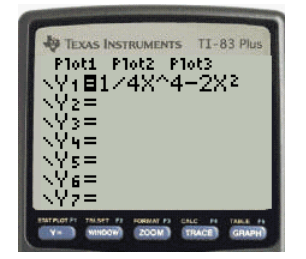
Figure 1
The second step is to set the range by pressing the Window, it is to be noted that there should be the negative sign with the window at the start of the expression comes from minus sign of the bracket that is to the left of the ENTER button.
The required display is shown in Figure 2
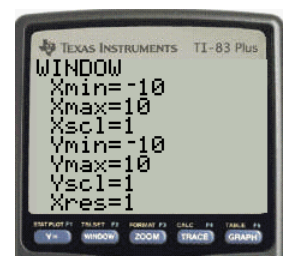
Figure 2
The third step is to press graph.
The required display for the graph is shown in Figure 3
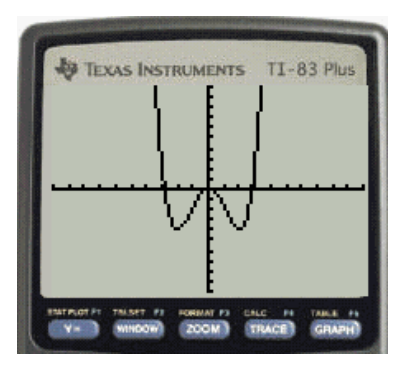
Figure 3
The fourth step is to Press TRACE to determine the x intercepts if the graph.
The required display for the graph is shown in Figure 4
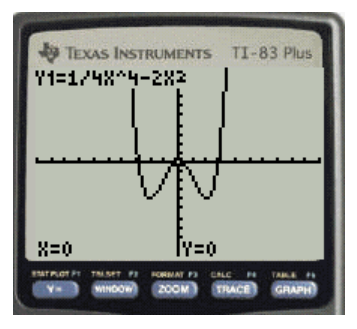
Figure 4
The fifth step is to Press the yellow coloured key to the find the graph functions and then select ZERO in the second line followed by ENTER press.
The required display for the graph is shown in Figure 5
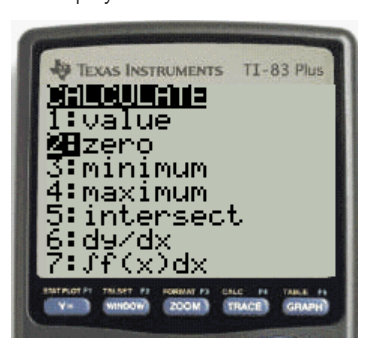
Figure 5
The step six is that graph is displayed with the left bound at the bottom left coroner press the arrow key or the enter value to select the x value for the left bound of the interval then press enter.
The required display for the graph is shown in Figure 5
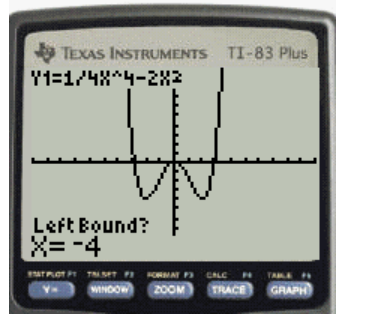
Figure 6
The step seven is that If the graph is displayed with the right bound in the bottom left then press the arrow key to select the value of the right bound of the interval and then press enter.
The required display for the graph is shown in Figure 7
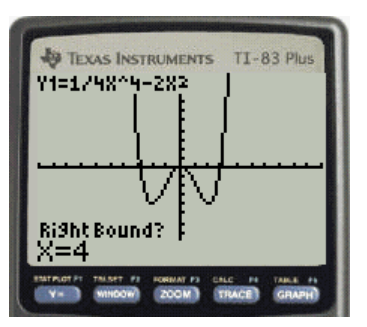
Figure 7
The step eight is that If the graph is displayed with the Guess at the bottom left corner than press the arrow key or the enter value to select the point near the zero of the function, that is between the bounds and then press enter.
The required display for the graph is shown in Figure 8
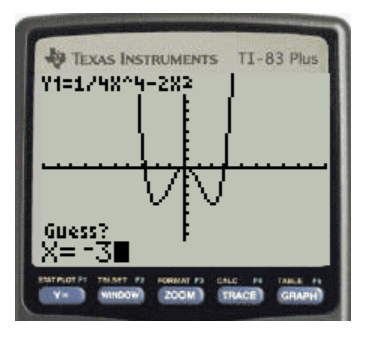
Figure 8
The step nine is that the x axis intercept nearest to the value of the guess is displayed with the coordinate. Therefore the x intercept is at
The required display is shown below.
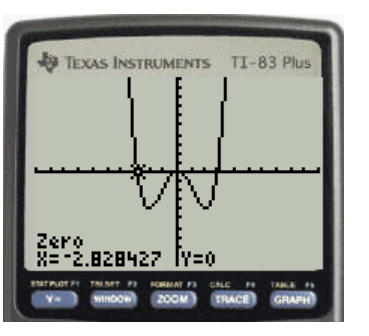
Figure 9
The step ten is to repeat from step five to eight and with the guess for the other value of the x axis intercept and the another x intercept is
The required display is shown below.
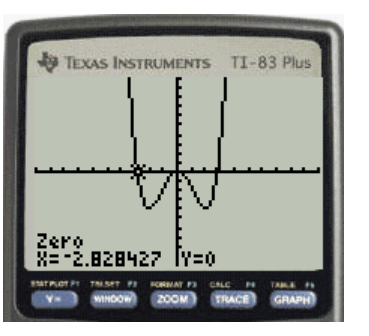
Figure 10
The step eleven is to repeat from step five to eight and with the guess for the other value of the x axis intercept and another x intercept is
The required Figure is shown in Figure 11
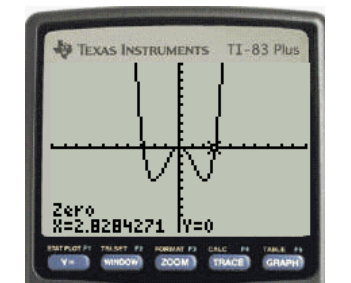
Figure 1
The graph touches the x axis at
Then, the multiplicity of zero is,
Chapter 2 Solutions
EBK PRECALCULUS W/LIMITS
- 3. [-/2 Points] DETAILS MY NOTES SESSCALCET2 7.4.013. Find the exact length of the curve. y = In(sec x), 0 ≤ x ≤ π/4arrow_forwardH.w WI M Wz A Sindax Sind dy max Утах at 0.75m from A w=6KN/M L=2 W2=9 KN/m P= 10 KN B Make the solution handwritten and not artificial intelligence because I will give a bad rating if you solve it with artificial intelligencearrow_forwardSolve by DrWz WI P L B dy Sind Ⓡ de max ⑦Ymax dx Solve by Dr ③Yat 0.75m from A w=6KN/M L=2 W2=9 kN/m P= 10 KN Solve By Drarrow_forward
- How to find the radius of convergence for the series in the image below? I'm stuck on how to isolate the x in the interval of convergence.arrow_forwardDetermine the exact signed area between the curve g(x): x-axis on the interval [0,1]. = tan2/5 secx dx andarrow_forwardSet up the partial fraction expansion of the function below. Do not explicitly solve for the variables 5 x²(x − 2)(x − 3)³ (24 - 81)² -arrow_forward
- Draw the triangle and show all the workarrow_forwardsolve these pleasearrow_forwardA factorization A = PDP 1 is not unique. For A= 7 2 -4 1 1 1 5 0 2 1 one factorization is P = D= and P-1 30 = Use this information with D₁ = to find a matrix P₁ such that - -1 -2 0 3 1 - - 1 05 A-P,D,P P1 (Type an integer or simplified fraction for each matrix element.)arrow_forward
 Calculus: Early TranscendentalsCalculusISBN:9781285741550Author:James StewartPublisher:Cengage Learning
Calculus: Early TranscendentalsCalculusISBN:9781285741550Author:James StewartPublisher:Cengage Learning Thomas' Calculus (14th Edition)CalculusISBN:9780134438986Author:Joel R. Hass, Christopher E. Heil, Maurice D. WeirPublisher:PEARSON
Thomas' Calculus (14th Edition)CalculusISBN:9780134438986Author:Joel R. Hass, Christopher E. Heil, Maurice D. WeirPublisher:PEARSON Calculus: Early Transcendentals (3rd Edition)CalculusISBN:9780134763644Author:William L. Briggs, Lyle Cochran, Bernard Gillett, Eric SchulzPublisher:PEARSON
Calculus: Early Transcendentals (3rd Edition)CalculusISBN:9780134763644Author:William L. Briggs, Lyle Cochran, Bernard Gillett, Eric SchulzPublisher:PEARSON Calculus: Early TranscendentalsCalculusISBN:9781319050740Author:Jon Rogawski, Colin Adams, Robert FranzosaPublisher:W. H. Freeman
Calculus: Early TranscendentalsCalculusISBN:9781319050740Author:Jon Rogawski, Colin Adams, Robert FranzosaPublisher:W. H. Freeman
 Calculus: Early Transcendental FunctionsCalculusISBN:9781337552516Author:Ron Larson, Bruce H. EdwardsPublisher:Cengage Learning
Calculus: Early Transcendental FunctionsCalculusISBN:9781337552516Author:Ron Larson, Bruce H. EdwardsPublisher:Cengage Learning





